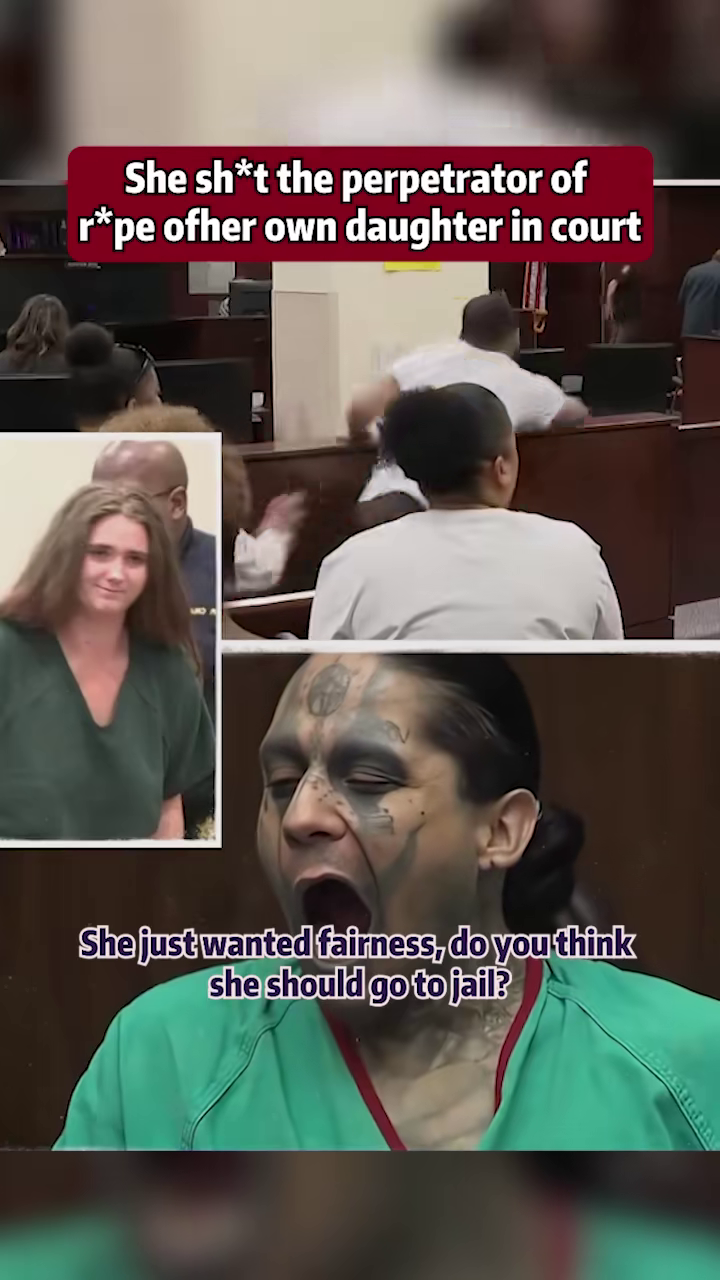A viral video circulating across social media depicts a shocking and emotionally charged story: a mother named Sara, devastated by the loss of her eight-year-old daughter, shoots and kills Ethan Cole—the man accused of her child’s assault and murder—inside a courtroom moments after he was acquitted. The video shows dramatic reenactments, courtroom chaos, and emotional captions describing a mother whose grief turns to vengeance when the justice system fails her.
However, there’s one critical problem — this story is not confirmed to be real. It appears to be a fictional or heavily dramatized narrative, borrowing elements from real-life cases like that of Marianne Bachmeier, a German mother who shot her daughter’s killer in a courtroom in 1981.
Even though the story may not be true, it has sparked millions of reactions, comments, and debates. Viewers everywhere are asking: If justice fails, does a parent have the right to take matters into their own hands?
The Viral Story — What the Video Claims Happened
According to the viral video:
-
A man named Ethan Cole was on trial for the rape and murder of Sara’s 8-year-old daughter.
-
After weeks of emotional testimony, the jury announced a “Not Guilty” verdict due to insufficient evidence.
-
Ethan allegedly smirked at Sara, causing outrage in the courtroom.
-
Overcome with grief and fury, Sara pulled out a hidden handgun from inside her jacket.
-
She fired three shots at Ethan Cole, striking him in the chest. He died on the courtroom floor.
-
Sara was arrested immediately, tried, and sentenced to life in prison for murder.
-
The video ends by calling her a hero to some, a criminal to others.
This dramatic sequence feels like it belongs in a courtroom thriller — and that’s because, most likely, it is fiction or semi-fiction.
The Truth — Real or Fake?
Despite the video going viral, no credible news outlet, court records, or official sources report any case involving a mother named “Sara” shooting a man named “Ethan Cole” after a not-guilty verdict in a U.S. courtroom.
Key signs the story is fictional or altered:
-
No official evidence, police report, or media coverage exists.
-
Courtrooms in the U.S. are heavily secured — armed spectators are rarely allowed inside.
-
The names and events don’t match any real case in American legal history.
Instead, the story mirrors a real-life case from Germany.
The Real Case Behind the Fiction: Marianne Bachmeier
The viral story closely resembles the true case of Marianne Bachmeier, a grieving mother from Lübeck, West Germany.
Key facts from the real case:
-
In 1981, Marianne’s 7-year-old daughter, Anna, was kidnapped, assaulted, and murdered by a man named Klaus Grabowski.
-
During his trial, Grabowski claimed the child had “seduced him,” causing public outrage.
-
On the sixth day of the trial, Marianne brought a loaded Beretta pistol into the courtroom.
-
She stood up and fired seven bullets, killing Grabowski instantly.
-
She was arrested and later sentenced to six years, but only served three years in prison for manslaughter.
While the viral story changes names, locations, verdicts, and outcomes, its core — a mother seeking justice when the system fails — is rooted in this historic case.
Why Do People Believe It?
The reason this fictionalized story has gone viral is simple: it feels real. It taps into common human emotions:
-
Grief of a parent who lost a child.
-
Anger when justice fails.
-
Desire for revenge against an unpunished criminal.
-
Moral conflict between law and emotional justice.
Millions of viewers comment:
-
“If someone hurt my child, I’d do the same.”
-
“She shouldn’t be in jail — she’s a hero.”
-
“The justice system failed her first.”
Others disagree:
-
“Taking the law into your own hands is still murder.”
-
“Emotions don’t excuse killing in a courtroom.”
The Ethics — Justice or Vigilante Revenge?
This story raises complex questions:
| Question | Ethical Viewpoint |
|---|---|
| Should a parent be allowed to kill their child’s murderer? | Some say it is morally understandable, but legally unacceptable. |
| Does a failed justice system justify revenge? | Emotionally yes — legally no. Society operates on law, not personal revenge. |
| Is Sara (or Marianne) a hero or a criminal? | She is both — a grieving mother and someone who killed outside the law. |
Courtroom Security — Could This Really Happen Today?
In real modern courtrooms, smuggling a gun inside is nearly impossible due to:
-
Metal detectors at every entrance
-
Security officers and bailiffs positioned around the courtroom
-
Restrictions on personal bags, weapons, and devices
This makes the viral video’s version — where a gun is pulled from a purse in front of a judge — very unlikely in most countries today.
Why These Stories Go Viral Online
True or not, these stories spread because:
-
They trigger intense emotions: anger, sadness, controversy.
-
They create a moral debate: justice vs law.
-
They are easily turned into short, dramatic videos with text, sad music, and courtroom clips.
-
Many viewers don’t fact-check, especially when a story feels believable.
When Fiction Feels Realer Than Reality
Social media thrives on emotional storytelling. Even if the case of “Sara and Ethan Cole” isn’t real, it opens conversations about:
-
How victims feel ignored by the legal system
-
Whether justice always equals law
-
How far a parent might go for their child
-
Why society sometimes sympathizes with vigilantes
Conclusion
The story of a mother shooting her daughter’s alleged murderer in court may not be real — but the emotions it reflects are. While the viral video is fictional or dramatized, real-life cases like Marianne Bachmeier’s prove that grief can push people beyond the boundaries of law.
So, viewers are left with a haunting question:
If justice failed your child… what would you do?

